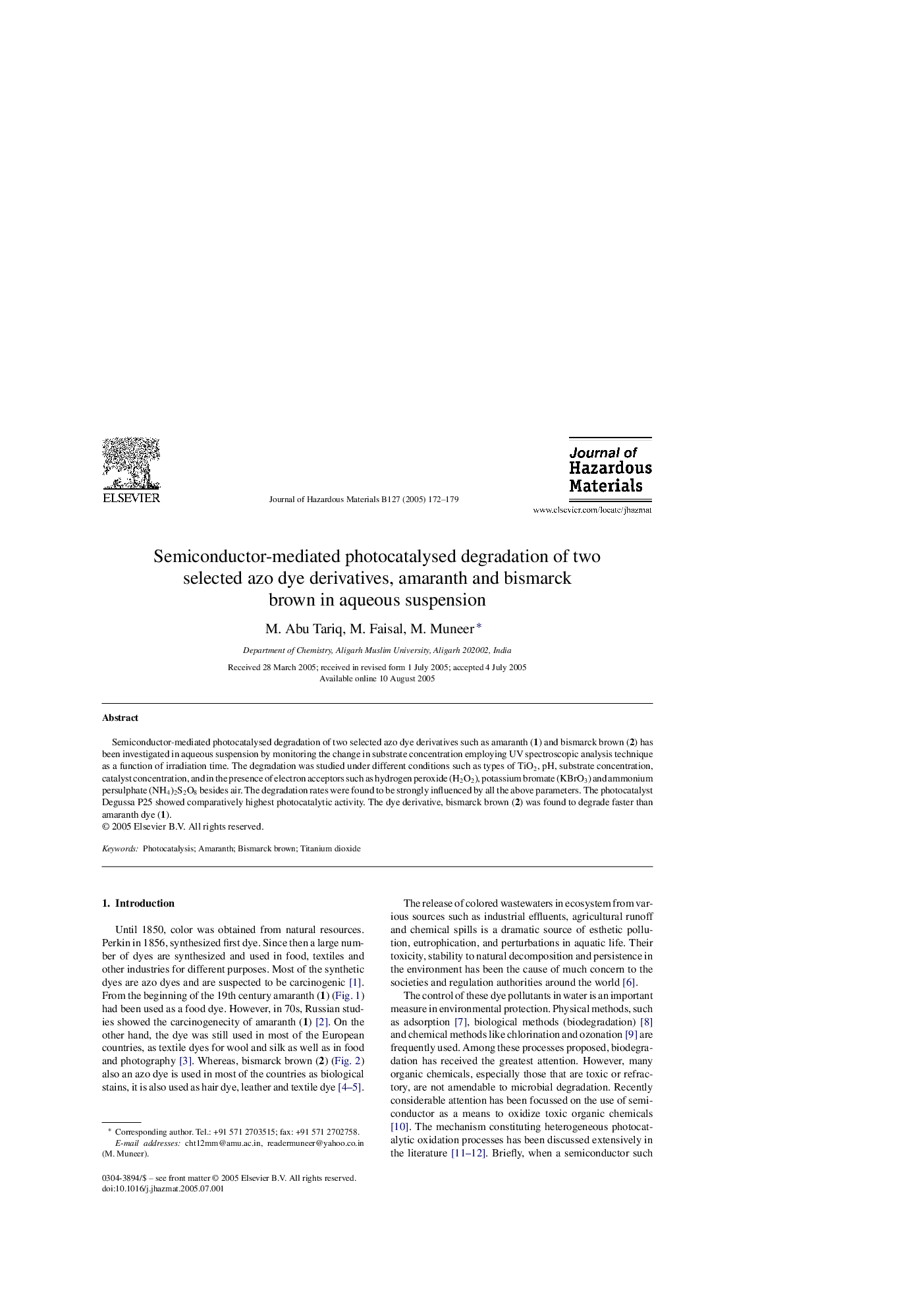| Article ID | Journal | Published Year | Pages | File Type |
|---|---|---|---|---|
| 9674073 | Journal of Hazardous Materials | 2005 | 8 Pages |
Abstract
Semiconductor-mediated photocatalysed degradation of two selected azo dye derivatives such as amaranth (1) and bismarck brown (2) has been investigated in aqueous suspension by monitoring the change in substrate concentration employing UV spectroscopic analysis technique as a function of irradiation time. The degradation was studied under different conditions such as types of TiO2, pH, substrate concentration, catalyst concentration, and in the presence of electron acceptors such as hydrogen peroxide (H2O2), potassium bromate (KBrO3) and ammonium persulphate (NH4)2S2O8 besides air. The degradation rates were found to be strongly influenced by all the above parameters. The photocatalyst Degussa P25 showed comparatively highest photocatalytic activity. The dye derivative, bismarck brown (2) was found to degrade faster than amaranth dye (1).
Related Topics
Physical Sciences and Engineering
Chemical Engineering
Chemical Health and Safety
Authors
M. Abu Tariq, M. Faisal, M. Muneer,
